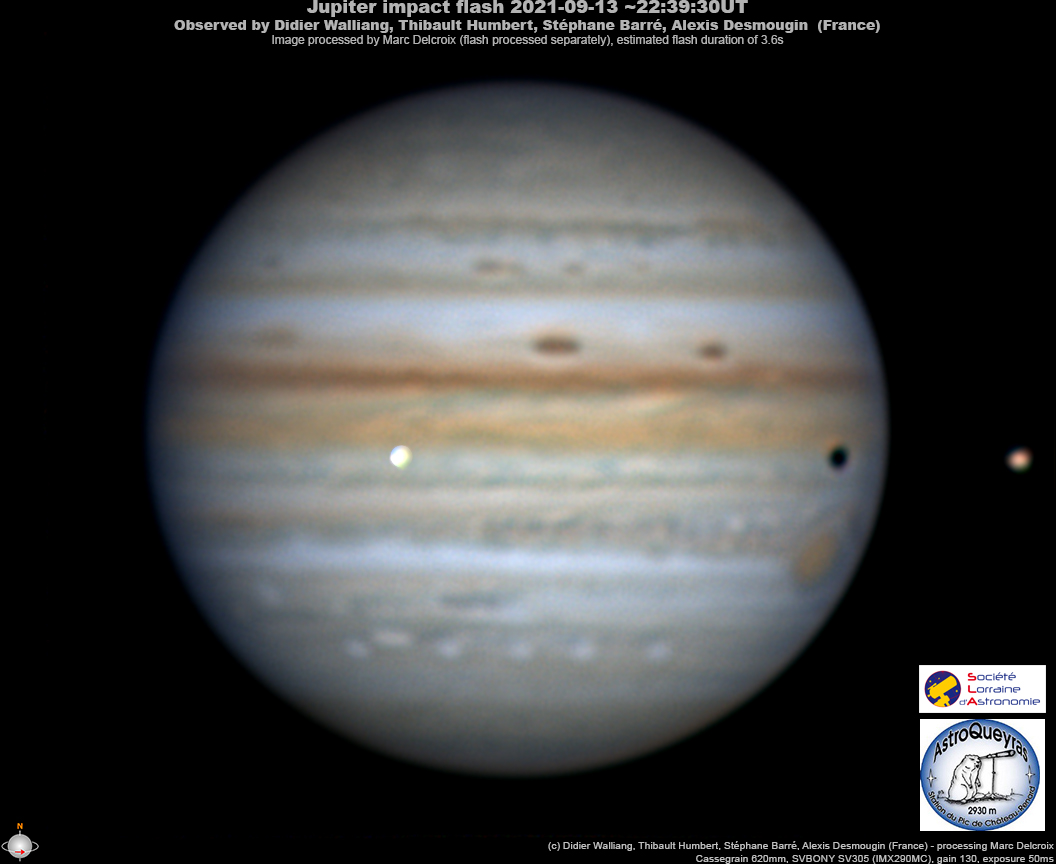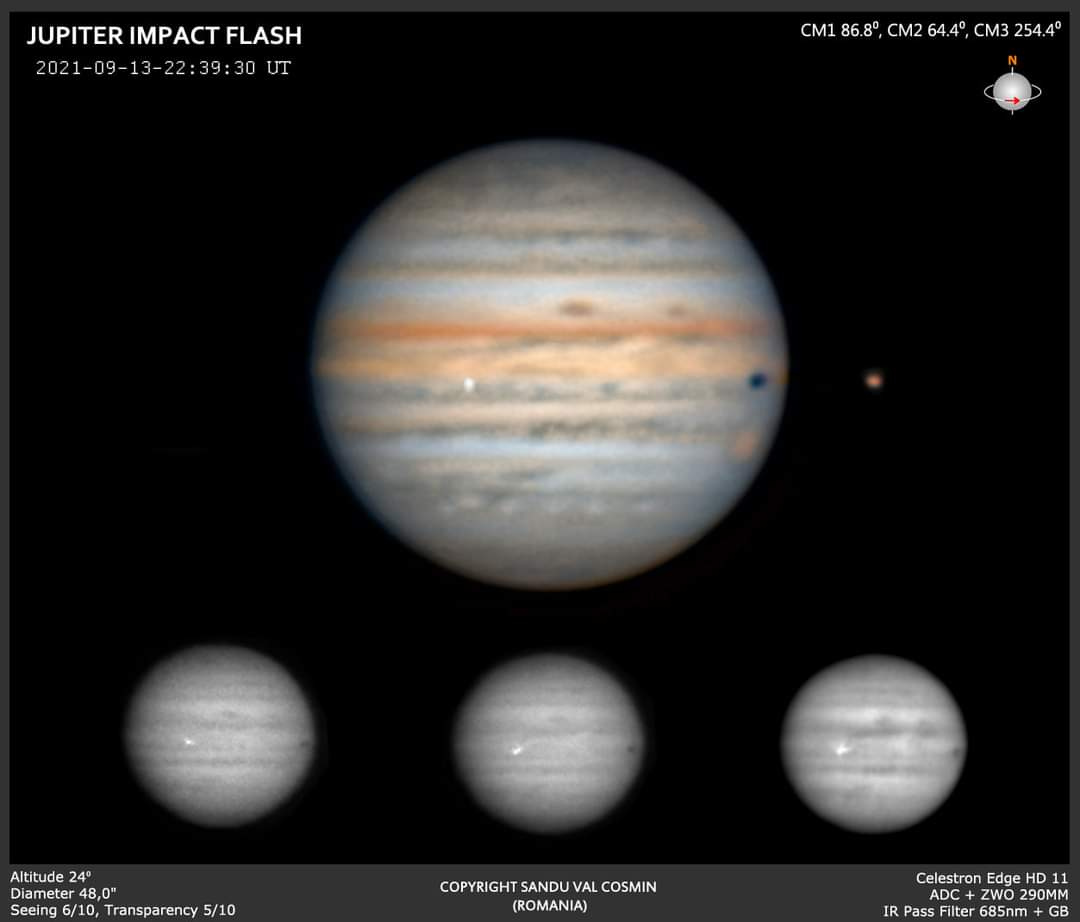the exceptional 2021.09.13 Jupiter impact flash
Discovery and observations
by Marc Delcroix
last updated 2021.09.16
Here is a summary of the discovery of
this impact, and all observations which could be recovered afterwards. This impact occurred on 2021.09.13 around 22:39:30 UT, in very good
conditions for detection and observations: Jupiter was close to
meridian from Europe, hence around its highest altitude (even if
maximum altitude was not so high for central Europe, e.g. 26° from
Paris). It was even more favorable from part of the American continent,
from example at 55° high from Sao Paulo, Brazil. Timing was also
favorable, close to opposition (24 days after opposition), hence with a
large apparent diameter (48 arcsec), a period when usually the most
amateur observations are done.
Discoveries
As of now, we consider that 5 amateurs discovered independently the impact
(following order is not important) !
Maciej Libert (Bremerhaven, Germany)
Maciej was capturing videos of Jupiter on his 350mm Schmidt-Cassegrain. Between two shots, he took a break for what he calls himself as the "blackest coffee of his life": when getting back to the PC, he saw through the screen the flash live (red filter was on) but capture was not running! He took other capture afterwards to look for traces (in methane absorption band filter) but could not find any, and posted the information on his facebook page after the observations.
Simone Galelli (Villachiara, Italy)
Simone, visual observer, could watch the flash at the eyepiece (with binoculars) of his 300mm Dobsonian, for about 1 second, and posted the information on his facebook page after the observation.
Harald Paleske
(Langendorg, Germany)
Harald captured the flash
through is 408mm Newtonian. He alerted the German-speaking community
afterwards on a famous forum (astrotreff.de),
and also posted the information on the cloudynight forum.
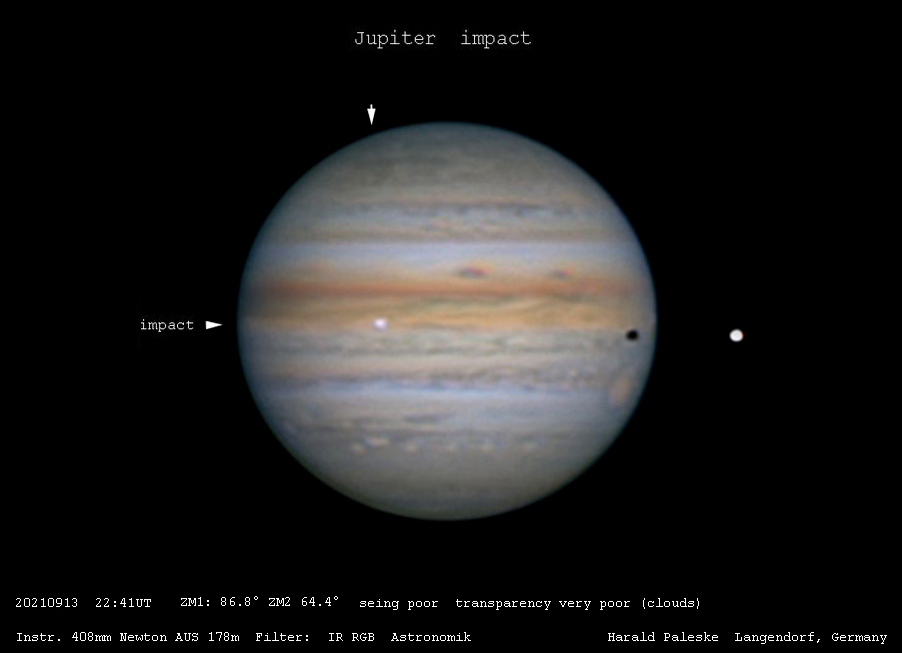
José Luis
Pereira (Sao Paulo, Brazil)
Weather conditions that night
for José Luis were not good with a lot of fog and bad seeing. But as a
highly motivated participant in the Jupiter
and Saturn impact detection "DeTeCt" program I run, he decided to
continue to attempt impact detection. During his first video, while
he was tweaking capture parameters, he saw something temporary
brightening on Jupiter, but thought it was due to the very bad and
varying seeing and transparency conditions. After his observation run,
he launched the DeTeCt software as usual on his video, and went to bed.
Next morning when checking the results of the software analysis, he
realized the software identified a very high probability of an impact
on this first video. He then contacted me to confirm the situation, and
realizing right away that this was an impact looking at the video, I
issued a large alert to the whole international planetary amateur
community (emails, groups, forums, social
media) and inform the professional community interested in the
topic, starting with Ricardo Hueso whom I have been working with for
many years. The alert was very largely shared, and lead to put in light
the other discoverers, and made three other observers check their
videos.

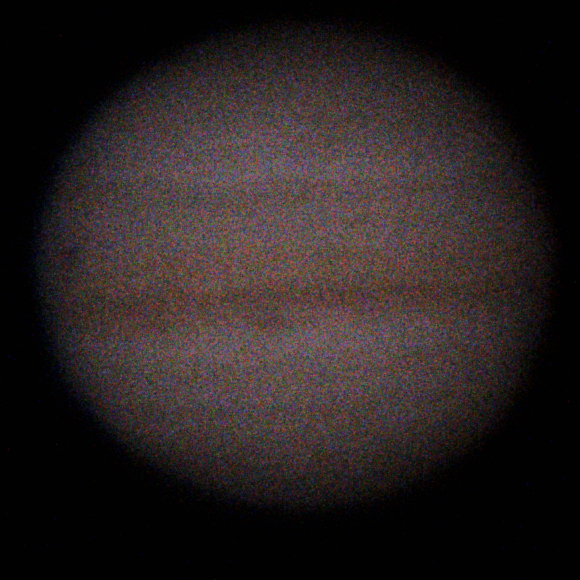
Discoveries
As of now, we consider that 5 amateurs discovered independently the impact
(following order is not important) !Maciej Libert (Bremerhaven, Germany)

Maciej was capturing videos of Jupiter on his 350mm Schmidt-Cassegrain. Between two shots, he took a break for what he calls himself as the "blackest coffee of his life": when getting back to the PC, he saw through the screen the flash live (red filter was on) but capture was not running! He took other capture afterwards to look for traces (in methane absorption band filter) but could not find any, and posted the information on his facebook page after the observations.
Simone Galelli (Villachiara, Italy)

Simone, visual observer, could watch the flash at the eyepiece (with binoculars) of his 300mm Dobsonian, for about 1 second, and posted the information on his facebook page after the observation.
Harald Paleske
(Langendorg, Germany)
Harald captured the flash
through is 408mm Newtonian. He alerted the German-speaking community
afterwards on a famous forum (astrotreff.de),
and also posted the information on the cloudynight forum.

José Luis
Pereira (Sao Paulo, Brazil)
Weather conditions that night
for José Luis were not good with a lot of fog and bad seeing. But as a
highly motivated participant in the Jupiter
and Saturn impact detection "DeTeCt" program I run, he decided to
continue to attempt impact detection. During his first video, while
he was tweaking capture parameters, he saw something temporary
brightening on Jupiter, but thought it was due to the very bad and
varying seeing and transparency conditions. After his observation run,
he launched the DeTeCt software as usual on his video, and went to bed.
Next morning when checking the results of the software analysis, he
realized the software identified a very high probability of an impact
on this first video. He then contacted me to confirm the situation, and
realizing right away that this was an impact looking at the video, I
issued a large alert to the whole international planetary amateur
community (emails, groups, forums, social
media) and inform the professional community interested in the
topic, starting with Ricardo Hueso whom I have been working with for
many years. The alert was very largely shared, and lead to put in light
the other discoverers, and made three other observers check their
videos.


Jean-Paul Arnould (Villey-le-sec, France)
Jean-Paul while capturing the giant planet that night, saw a brief flash on the PC screen. He wondered what it was but continues his acquisitions. When done, he checked his videos and was quite happy to see the phenomenon, while still doubting it was coming from Jupiter. The day after, he shared his finding with another amateur astronomer, who heard of the alert concerning José Luis discovery. He then shared his impact flash observation with the French Astronomical Society, who transferred it to me as the person responsible for the planetary observations section.
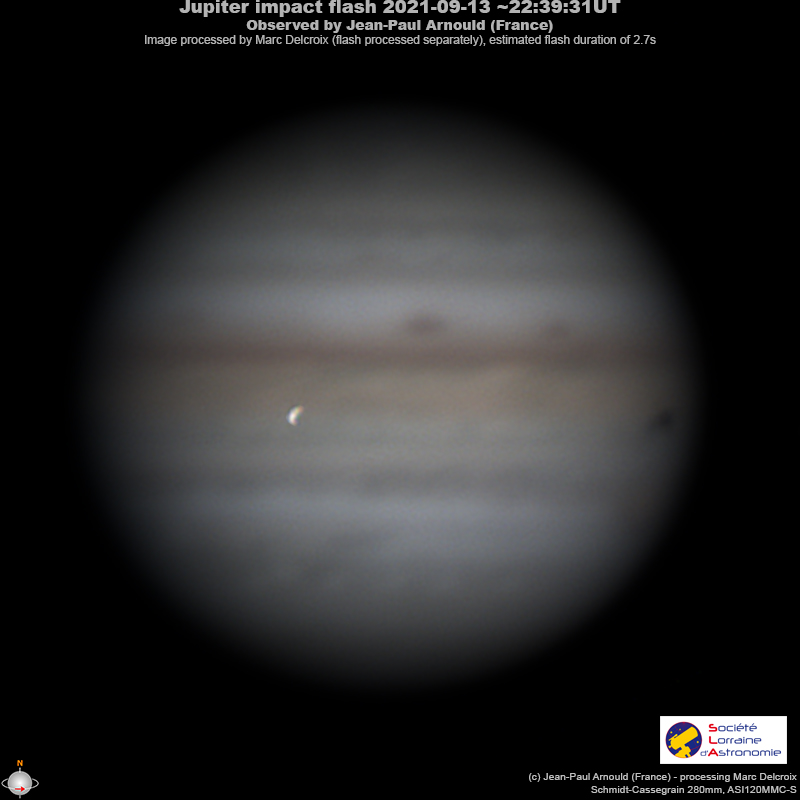
Observations recovered after the discoveries
As of now, we had two other captures of the phenomenon, which were recovered after the captures, thanks to the alert issued
Didier
Walliang, Thibault Humbert, Stéphane Barré, Alexis Desmougin
(AstroQueyras, Saint-Véran observatory, France)
Having seen on twitter the day after
the alert issued, a team of French amateur astronomers observing
through a 620mm Cassegrain in the high altitude observatory of
AstroQueyras realized they could have caught the impact flash. They
used the DeTeCt
software to confirm it after having looked at the video.
This observation is quite important for the scientific study of the
phenomenon, having been done through a large telescope, under average
conditions (but better than the other observations).
